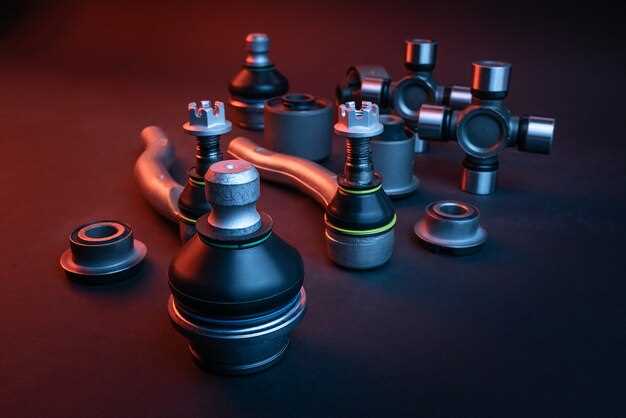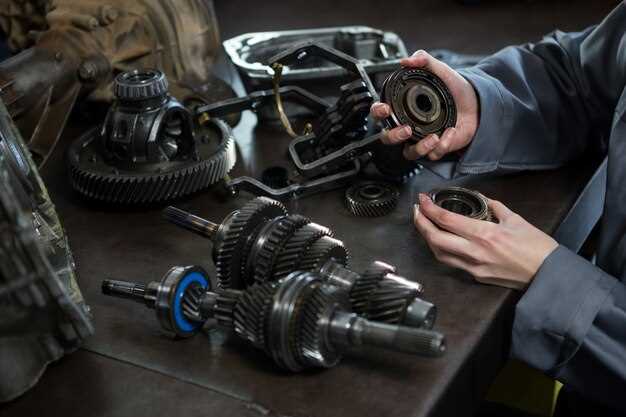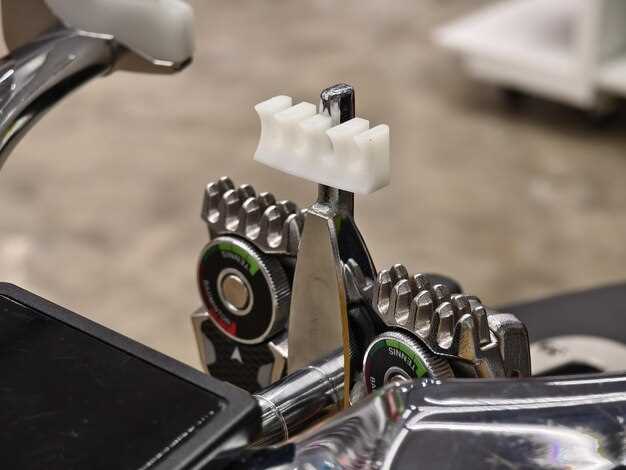
When it comes to enhancing your vehicle’s performance, upgrading the camshaft stands out as one of the most effective modifications you can make. The camshaft plays a crucial role in controlling the timing and duration of your engine’s valve openings, directly influencing the engine’s airflow and, consequently, its horsepower. By optimizing these parameters, you can unlock significant power gains that elevate your driving experience to a whole new level.
Understanding the impact of a camshaft upgrade requires a deeper dive into its design and function. A performance camshaft is engineered to provide higher lift and longer duration than standard models, allowing your engine to breathe more efficiently. This increase in airflow enables the combustion process to become more effective, translating directly to increased horsepower. However, it is essential to consider the compatibility of your new camshaft with the rest of your engine’s components to achieve optimal results.
Additionally, choosing the right camshaft for your specific needs and driving style is vital. Factors such as engine displacement, intended use, and power band requirements will all influence your selection. Whether you seek thrilling horsepower for track days or improved torque for daily driving, a well-chosen camshaft can profoundly affect your engine’s characteristics and overall performance.
Understanding Camshaft Basics and Terminology
The camshaft is a crucial component in internal combustion engines, responsible for controlling the timing and movement of the engine’s valves. It translates the rotational motion of the crankshaft into linear motion, allowing the intake and exhaust valves to open and close at precise intervals during the engine cycle. Understanding the basics of camshafts and their terminology is essential for anyone looking to improve engine performance.
Camshafts are typically made from cast iron or forged steel for durability. They come in various configurations, including single overhead cam (SOHC) and double overhead cam (DOHC) designs. The position and number of camshafts can significantly impact valve timing and overall engine efficiency.
Key terms associated with camshafts include “lift,” “duration,” and “lobe separation angle.” Lift refers to how far the valve is opened by the camshaft, directly affecting the volume of air and fuel entering the combustion chamber. Duration is the length of time the valve remains open, influencing the engine’s performance characteristics at different RPM ranges. Lobe separation angle defines the spacing between the intake and exhaust lobes; it affects the engine’s overlap period, impacting performance and idle quality.
When upgrading a camshaft, one must consider the specific performance goals. A camshaft with increased lift and longer duration can boost horsepower but may sacrifice drivability at lower RPMs. It’s essential to balance these factors to achieve the desired performance without compromising reliability.
In summary, understanding camshaft basics and terminology is vital for making informed decisions when upgrading your engine. By grasping how lift, duration, and lobe separation angle affect your vehicle’s performance, you can tailor your camshaft choice to maximize horsepower while maintaining engine efficiency.
Choosing the Right Camshaft Profile for Your Engine

When it comes to upgrading your vehicle’s performance, selecting the appropriate camshaft profile is crucial for maximizing horsepower. Different engines require specific camshaft characteristics to perform optimally, and understanding the relationship between the camshaft profile and engine dynamics can lead to significant gains in power output.
The camshaft profile encompasses various parameters, such as lift, duration, and lobe separation angle. Lift refers to how far the valves open, directly influencing the volume of air and fuel mixture that enters the combustion chamber. A higher lift can result in improved airflow, thereby increasing horsepower, but it may also necessitate modifications to other engine components.
Duration is the time, measured in degrees of crankshaft rotation, that the valves remain open. Longer duration can enhance high RPM performance, ideal for racing applications, but may sacrifice low-end torque, making it essential to balance your needs according to driving style. For street performance, a moderate duration that provides a broad power band is often preferred.
Lobe separation angle affects the overlap between exhaust and intake valve timing. A tighter angle typically enhances throttle response and improves mid-range power, while a wider angle can help deliver more horsepower at higher engine speeds. The correct lobe separation will depend on the specific performance goals and characteristics of your engine.
It’s vital to consider the complete engine setup when selecting a camshaft profile. Factors such as compression ratio, intake and exhaust systems, and the type of fuel used can all impact how effectively a camshaft will perform. Consulting with an experienced engine builder or performance specialist can provide valuable insights, ensuring you choose a camshaft profile that aligns with your horsepower objectives while maintaining overall engine reliability.
In summary, choosing the right camshaft profile is a key step in upgrading your engine’s performance. Focusing on lift, duration, and lobe separation angle, while taking all engine characteristics into account, will set the stage for significant horsepower improvements and a more enjoyable driving experience.
Installing a Camshaft: Tools and Techniques You Need
Upgrading your vehicle’s camshaft can significantly enhance engine performance. However, proper installation is crucial for ensuring your engine runs smoothly and efficiently. Below are the essential tools and techniques you’ll need for a successful camshaft installation.
Essential Tools:
- Socket Set: A comprehensive socket set with various sizes will help you remove and reinstall fasteners effectively.
- Torque Wrench: This tool is necessary to ensure that all bolts are tightened to the specifications provided by the camshaft manufacturer.
- Engine Hoist (if necessary): Depending on your vehicle, you may need this to gain better access to the engine bay.
- Camshaft Alignment Tool: This helps you position the camshaft accurately during installation.
- Gasket Scraper: A scraper will be essential for removing old gasket material from the cylinder head.
- Oil Pump Primer: This tool helps to prime the oil system after installation, ensuring proper lubrication during initial startup.
Techniques:
- Preparation: Start by gathering all your tools and filling your workspace with light. A clean environment will help in avoiding any debris from contaminating the engine.
- Remove Components: Detach the necessary components such as the intake manifold and valve covers to access the camshaft area. Keep track of all fasteners and parts for reassembly.
- Inspect and Clean: Before installing the new camshaft, inspect the timing chain or belt and replace it if necessary. Clean the surfaces where gaskets will sit to ensure a proper seal.
- Proper Alignment: Use the camshaft alignment tool to ensure correct positioning before securing it. This step is critical to achieving optimal performance.
- Follow Torque Specifications: Always adhere to the torque specifications specified in the camshaft kit. Using the torque wrench correctly will prevent over-tightening, which can lead to damage.
By equipping yourself with the right tools and employing these techniques, you’ll be well on your way to successfully installing your new camshaft and unlocking more horsepower from your engine.
Tuning Your Engine After Camshaft Installation
After upgrading your camshaft, tuning your engine is essential to fully realize the potential horsepower gains. This process ensures that the engine runs smoothly and efficiently with the new camshaft specifications. Below are key steps and considerations for effective engine tuning post-installation.
-
Initial Check:
Before any tuning, perform a thorough inspection of the camshaft installation. Ensure all components are secured, and there are no oil leaks. Inspect timing alignment and confirm that the correct components are used to match your cam specifications.
-
Recalibrate the ECU:
The engine’s Electronic Control Unit (ECU) may require recalibration to accommodate the new camshaft’s characteristics. This adjustment is crucial to optimize fuel delivery and ignition timing for increased horsepower.
-
Adjust Fuel Maps:
With a new camshaft, the air-fuel ratio can change significantly. Adjusting fuel maps is necessary to ensure the engine receives the proper mixture. Consider the following:
- Richening or leaning out the mixture based on dyno results.
- Using performance fuel injectors for better delivery.
-
Tune Timing:
With the new camshaft, valve timing changes, impacting the best ignition timing. Dial in the timing using a tuning software or dyno to ensure optimal performance. Proper timing can enhance horsepower and engine efficiency.
-
Perform a Dyno Test:
A dynamometer (dyno) test is critical after the camshaft installation. This testing helps quantify horsepower gains and fine-tune adjustments made in the ECU to ensure peak performance. Monitor the torque curve and horsepower to identify areas needing further adjustment.
-
Monitor Engine Performance:
Post-tuning, regularly monitor engine performance over time. Look out for any signs of detonation or issues that may arise due to the new setup. Utilize data logging tools to track how the new camshaft is affecting overall performance and horsepower.
By following these steps, you can maximize the horsepower benefits achieved through your camshaft upgrade, ensuring your engine performs at its best. Proper tuning allows you to realize the full potential of your modifications while maintaining engine reliability.
Common Mistakes to Avoid When Upgrading Your Camshaft

Upgrading your camshaft can significantly enhance your engine’s performance, but there are several common mistakes that enthusiasts often make during this process. By being aware of these pitfalls, you can ensure a smoother upgrade and maximize your horsepower gains.
| Mistake | Description |
|---|---|
| Choosing the Wrong Camshaft | Not matching the camshaft specifications to your engine setup can lead to suboptimal performance. Ensure that the camshaft’s lift, duration, and lobe separation angle align with your intended use and other engine components. |
| Inadequate Supporting Modifications | Focusing solely on the camshaft while neglecting supporting modifications, such as upgraded valvesprings, intake, and exhaust systems, can limit the performance benefits. |
| Ignoring Engine Compatibility | Each engine has specific characteristics. Failing to consider your engine’s architecture may result in compatibility issues, potentially damaging components. |
| Neglecting Professional Advice | Overlooking expert recommendations can lead to poor choices. Consulting with professionals or referencing reputable sources can help avoid costly mistakes. |
| Rushing the Installation | Impatience can result in installation errors. Take the necessary time to follow all procedures methodically to ensure that the camshaft is installed correctly. |
| Disregarding Tuning Requirements | Not recalibrating your engine’s tuning after a camshaft upgrade can hinder performance. Proper tuning ensures that the engine runs efficiently and takes full advantage of the new camshaft. |
By avoiding these common mistakes, you can ensure a successful camshaft upgrade that delivers the horsepower and performance improvements you desire. Take the time to plan, research, and execute your upgrade to achieve optimal results.
Evaluating Performance Gains: How to Measure Horsepower Increases
After upgrading your camshaft, it’s essential to accurately measure the increase in horsepower to evaluate the performance gains achieved. There are several methods to assess these changes effectively. The most common approach is dynamometer testing, which provides precise measurements of engine output.
To begin with, setting up a dynamometer allows you to measure both the engine’s torque and horsepower at various RPMs. Before the camshaft upgrade, conduct a baseline test to record the original performance figures. After installing the new camshaft, perform another test under the same controlled conditions to ensure comparability.
Another method involves using an OBD-II scanner and performance meter, which can provide real-time data on horsepower increases by calculating changes in vehicle speed and engine parameters. While this method is less accurate than a dynamometer, it offers a practical alternative for enthusiasts looking for a quick assessment.
Additionally, track testing on a controlled course can highlight the real-world impact of the camshaft upgrade. Timing the vehicle over a quarter-mile or measuring acceleration from 0-60 mph can indicate performance changes, although these figures can be influenced by various factors, such as weather conditions and driving technique.
Lastly, consider collecting feedback from the vehicle’s drivability and responsiveness post-upgrade. Improvements in throttle response, acceleration, and overall driving experience can provide qualitative insights into the effectiveness of the camshaft modification beyond raw horsepower figures.
In summary, measuring horsepower increases after a camshaft upgrade involves a combination of dynamometer testing, performance meters, track testing, and subjective evaluations. Each method offers valuable information to help you gauge the true impact of your modifications on engine performance.













